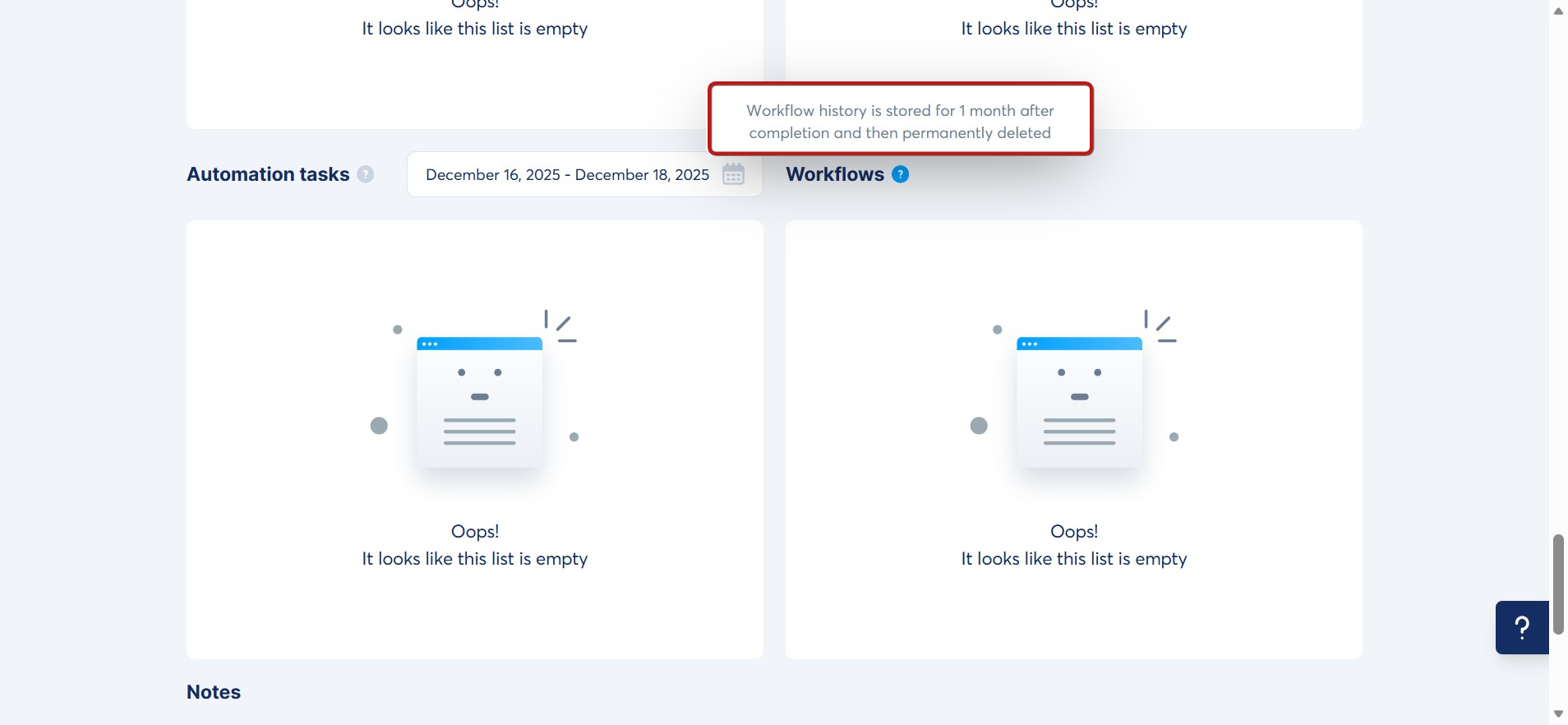How to create workflows in systeme.io
In this article, you will learn all about workflows and how to create them in systeme.io.
Creating a new workflow
Log in to your systeme.io account, click on the Automations tab in the menu bar, then select Workflows (1).
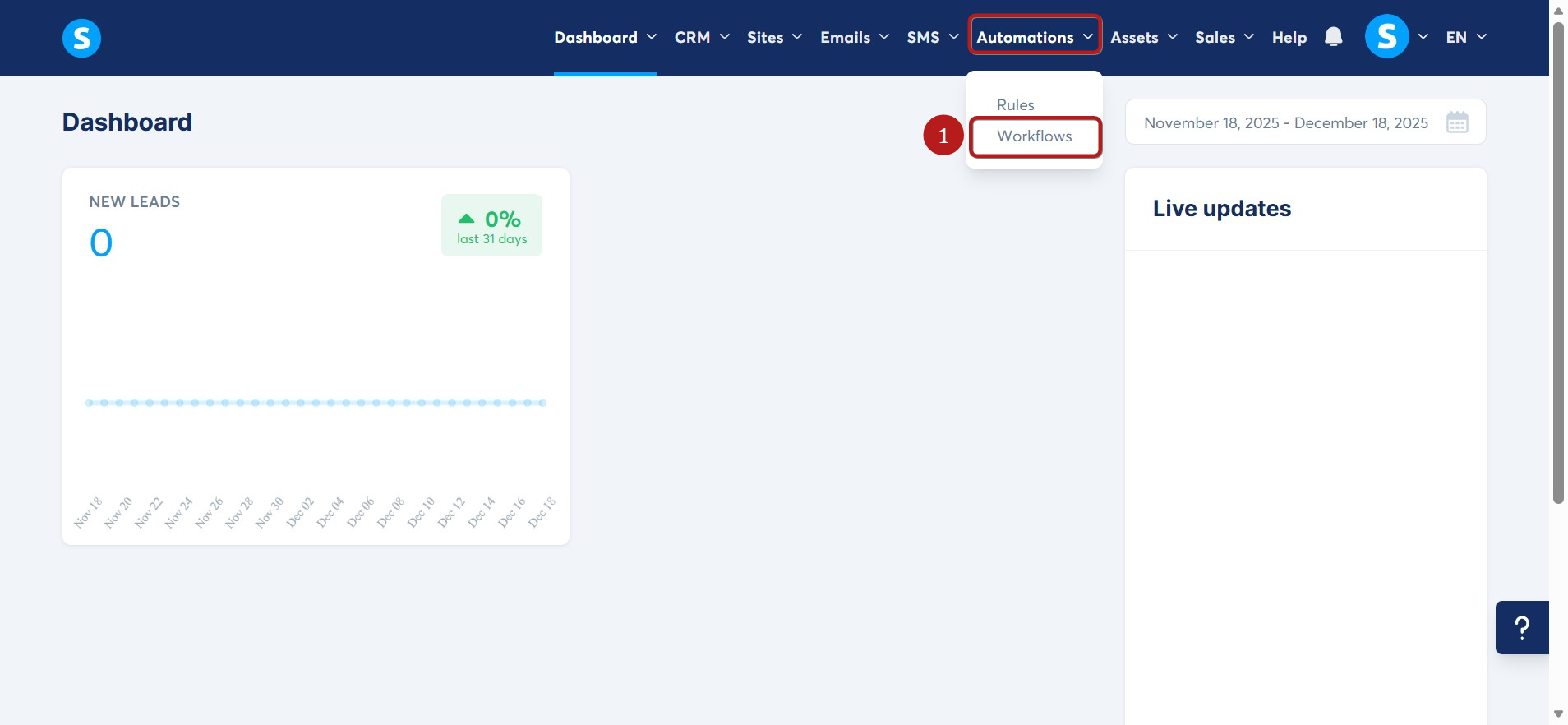
Click on the Create (2) button.
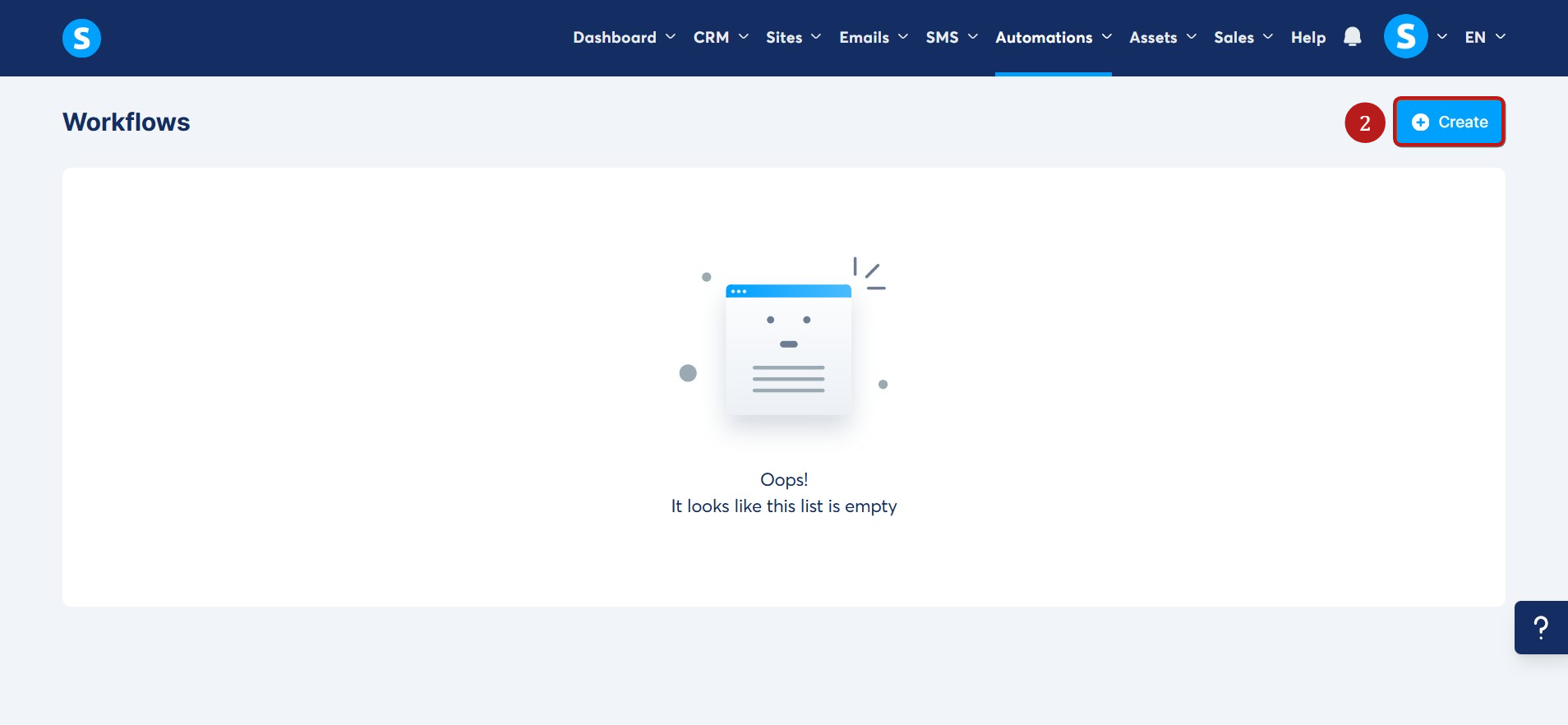
Choose a name for your workflow and click Save (3).
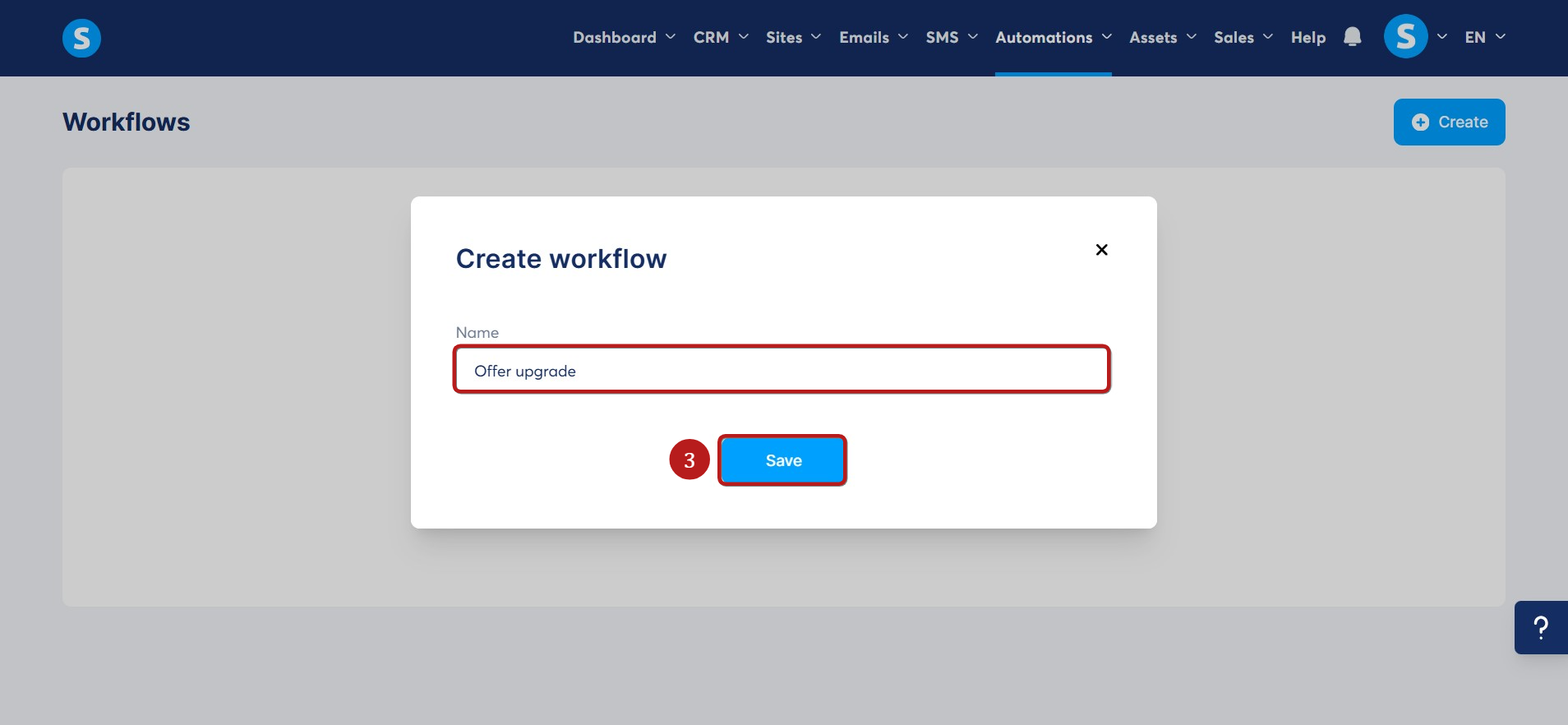
Now that a new workflow has been created, you’ll need to define triggers and assign actions.
1) Adding a trigger
A trigger is an event that starts the workflow. For example, when a user purchases a product or subscribes to your newsletter.
To create a trigger:
- Click on Create your first trigger (4).
- Then click on “+” to define the next step in the workflow.

You can choose from the following trigger types:
- Meeting scheduled: When a contact schedules a meeting.
- Tag added / Tag removed: When a tag is added or removed from a contact after the workflow is activated (tags added/removed before activation are not considered).
- Funnel form subscribed: When a contact subscribes via a funnel form.
- Blog page form subscribed: When a contact subscribes via a form on a blog page.
- Campaign completed: When a contact completes a campaign.
- Webinar registration: When a contact registers for a webinar.
- Enrolled in course: When a contact enrolls in a course.
- Course completed: When a student completes a course.
- Module completed: When a student completes a module.
- Lecture completed: When a student completes a lecture.
- Enrolled in a course bundle: When a contact enrolls in a course bundle.
- New sale: When a customer purchases an offer.
- Sale canceled: When a subscription is canceled or a one-time payment is refunded.
- Email opened: When a contact opens an email.
- Email link clicked: When a contact clicks a link inside an email.
- Page visited: When a contact visits a specific page.
- Enrolled in community: When a contact joins a community.
- Subscription payment failed: When a subscription payment fails.
- Creator store form subscribed: When a contact subscribes through the “Collect emails” section in the digital store.
Notes:
- You can define multiple triggers to occur simultaneously.
- Actions will only be executed if the trigger happens after the workflow is activated.
2) Adding a workflow step
After setting up a trigger, click “+” to add the next step. You can choose from:
- Action: An operation performed in systeme.io (e.g., add/remove tag, subscribe to a campaign, etc.).
- Decision: Branch the workflow depending on the contact’s characteristics (using filters).
- Delay: Insert a waiting period before moving to the next step.
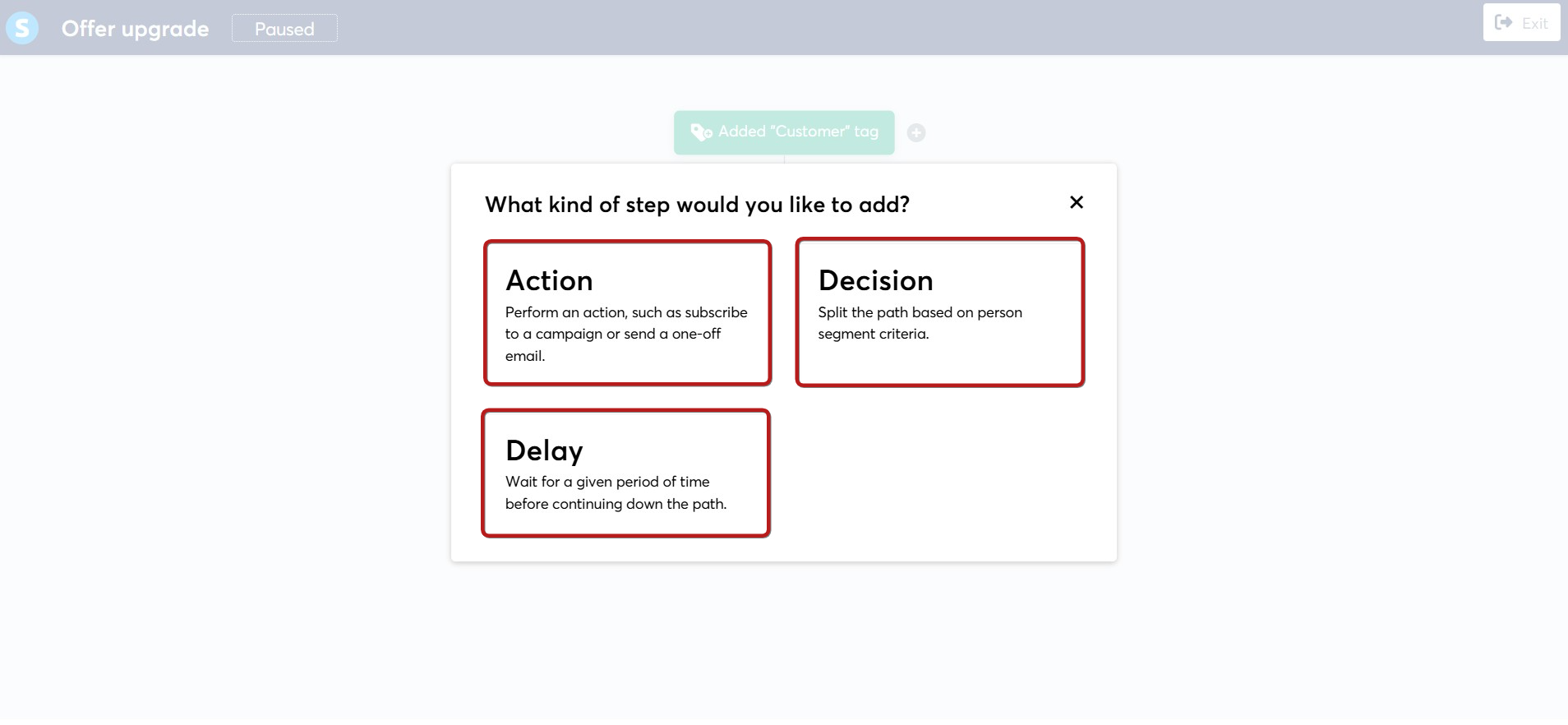
Sample workflow
Let’s create a sample workflow to illustrate how to use these elements.
Background
In this scenario:
- You are selling two offers.
- You have two campaigns: Campaign 1 promotes Offer #1, and Campaign 2 promotes Offer #2.
- An automation rule assigns the Customer 1 tag to every buyer of Offer #1.
Workflow sequence
- When a lead subscribes through the opt-in page, subscribe them to Campaign 1 to promote Offer #1.
- If they buy Offer #1:
- Unsubscribe them from Campaign 1.
- Subscribe them to Campaign 2 to promote Offer #2.
Steps to follow
- Create a trigger: Choose Funnel form subscribed and select the opt-in page. Click on Create.

- Add an action: Choose Subscribe to campaign and select Campaign 1.
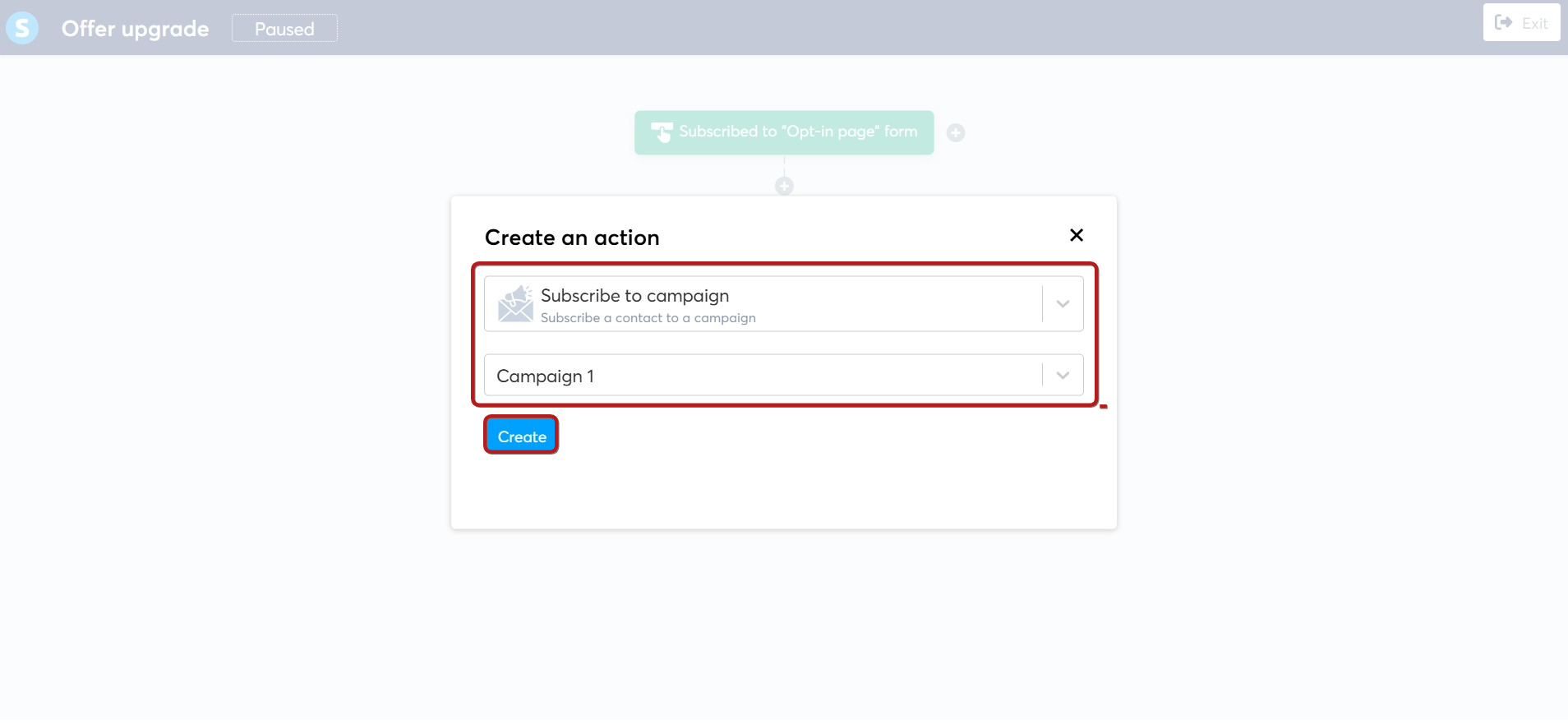
- Optional: Add a delay so the contact has time to receive emails from Campaign 1.: Add a delay so the contact has time to receive emails from Campaign 1.
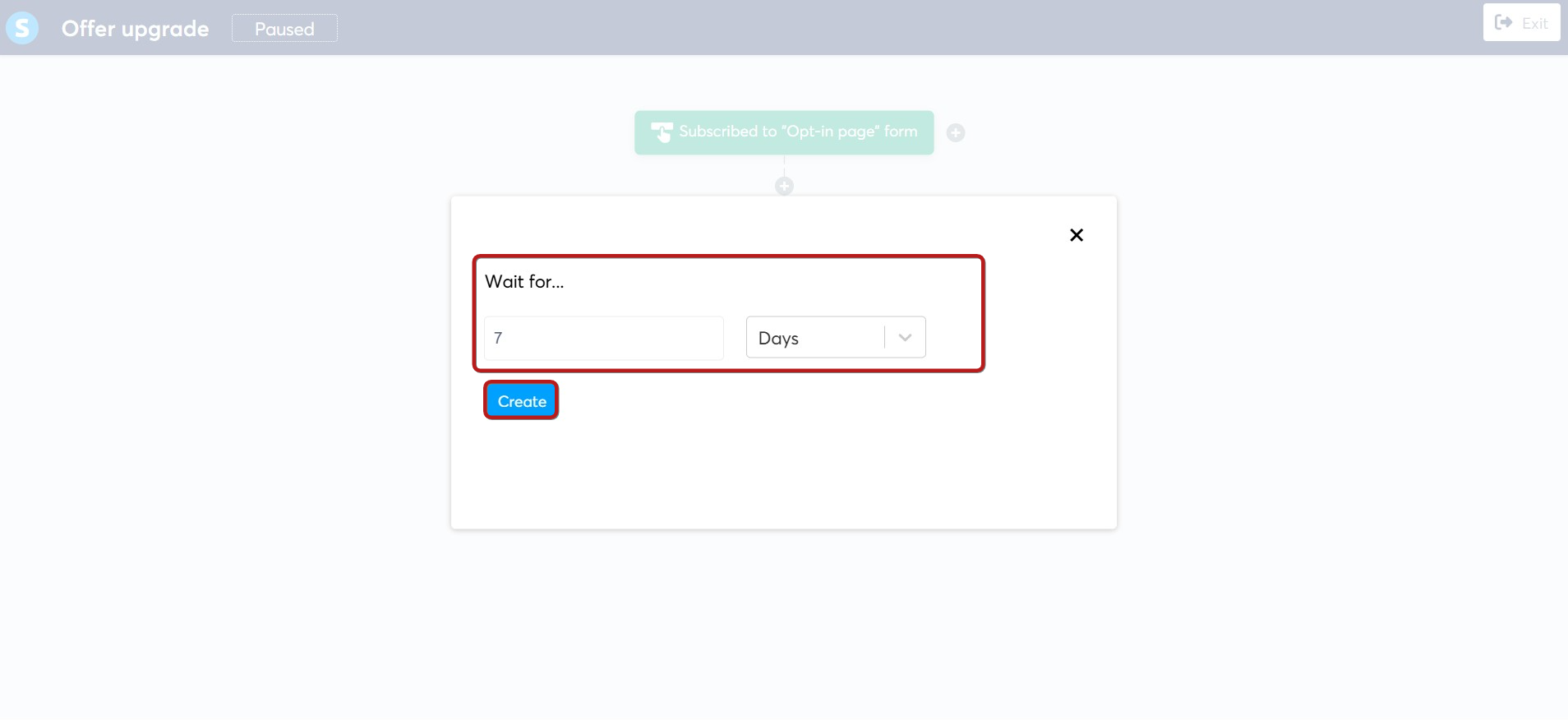
- Add a decision: Use the Tag filter → Contact tagged with → choose Customer 1.
You can always add another group of conditions.
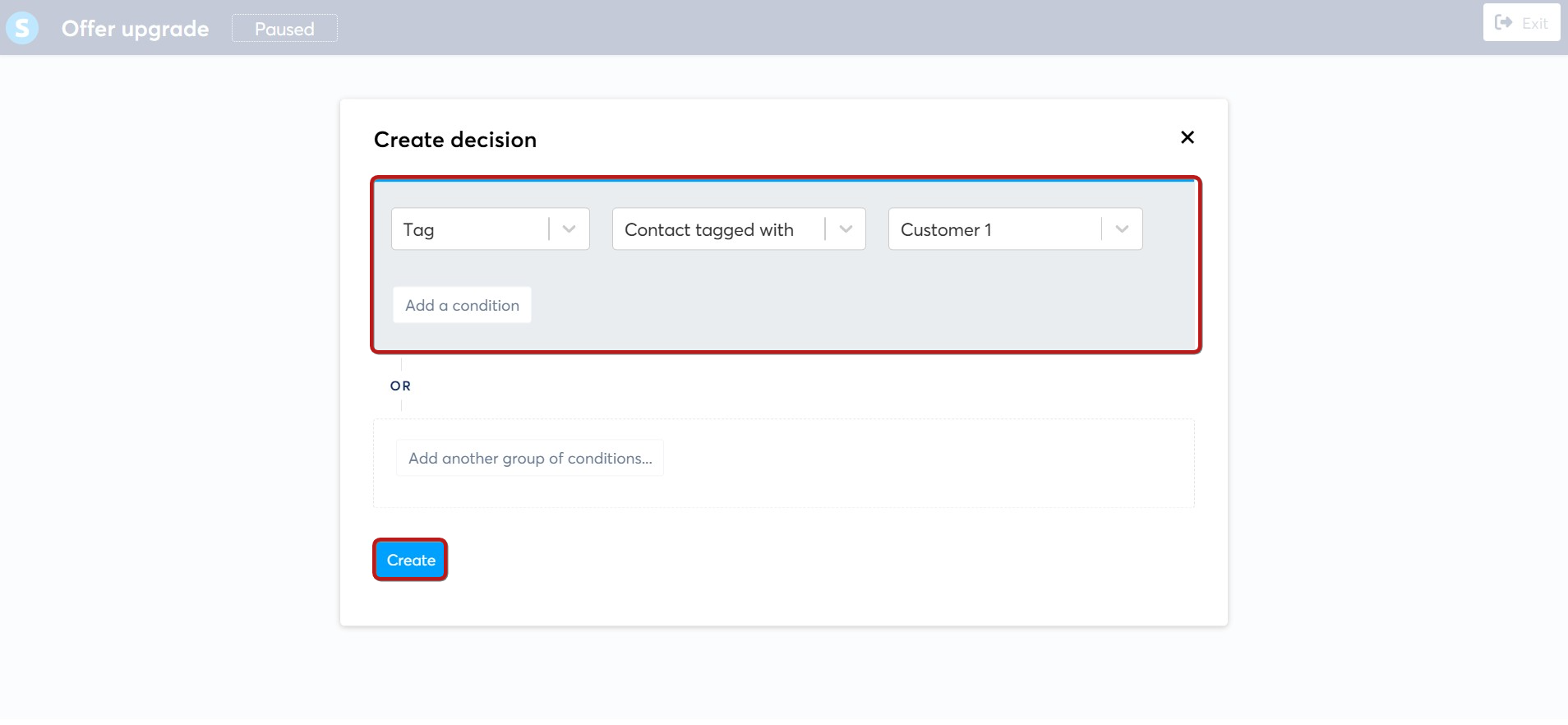
- After the decision, there are two possible paths:
- No: The contact doesn't have the Customer 1 tag (they haven’t purchased yet)
- Yes: The contact has the tag (they’ve purchased)
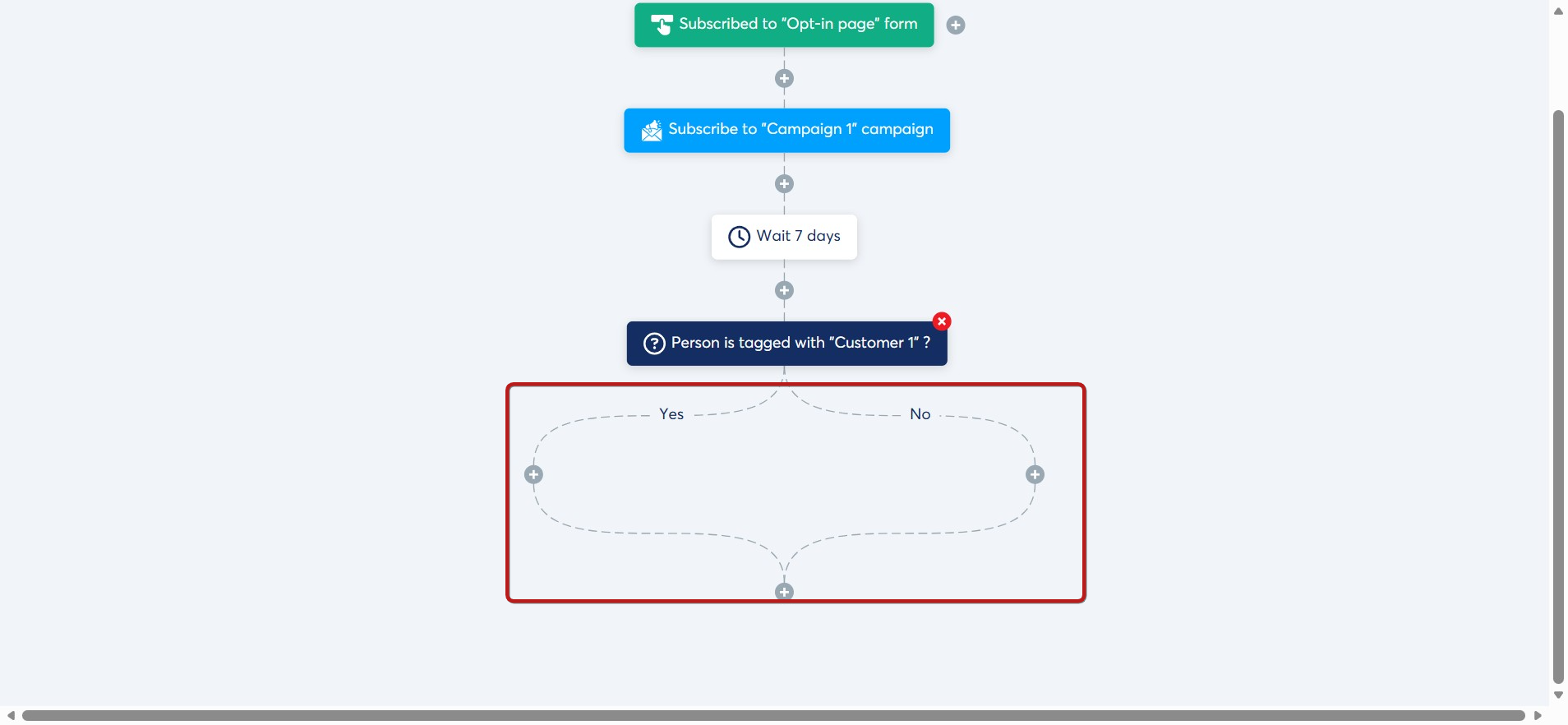
If yes, add two more actions :
- Unsubscribe from Campaign 1
- Subscribe to Campaign 2
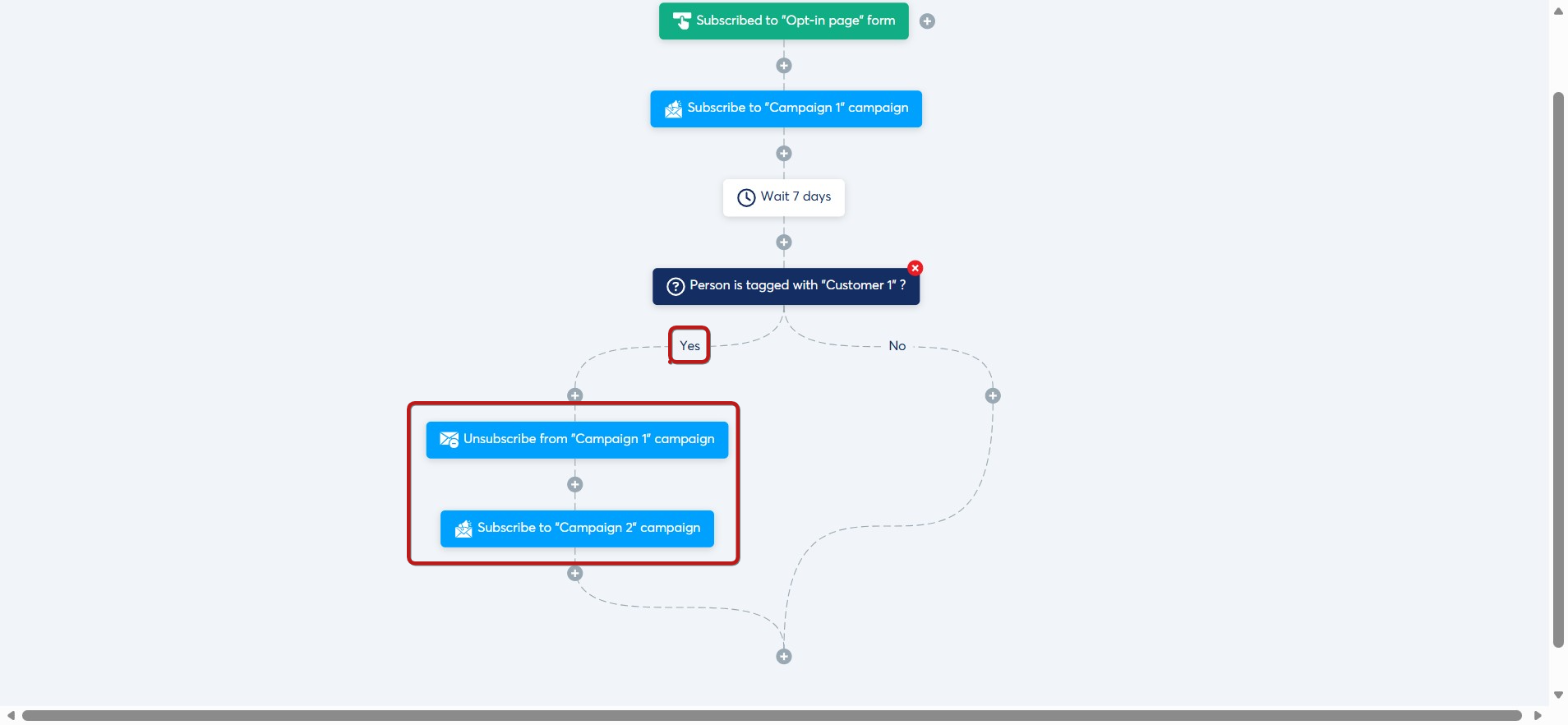
Once the workflow is configured, you must activate it.
Activating the workflow
To activate the workflow:
- Go to the workflow list.
- Hover over the three dots (...) next to the workflow.
- Click Activate.
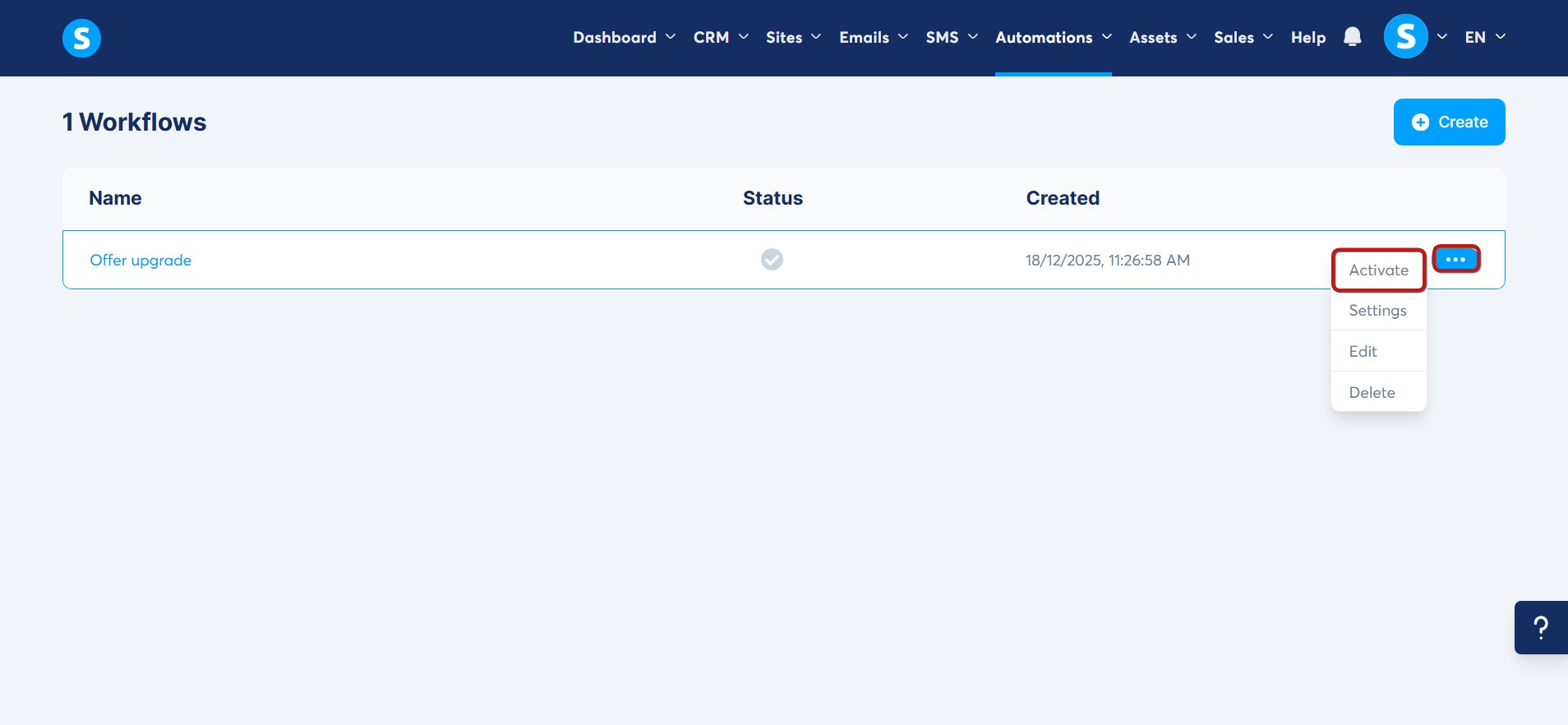
On the popup that appears, click Confirm.
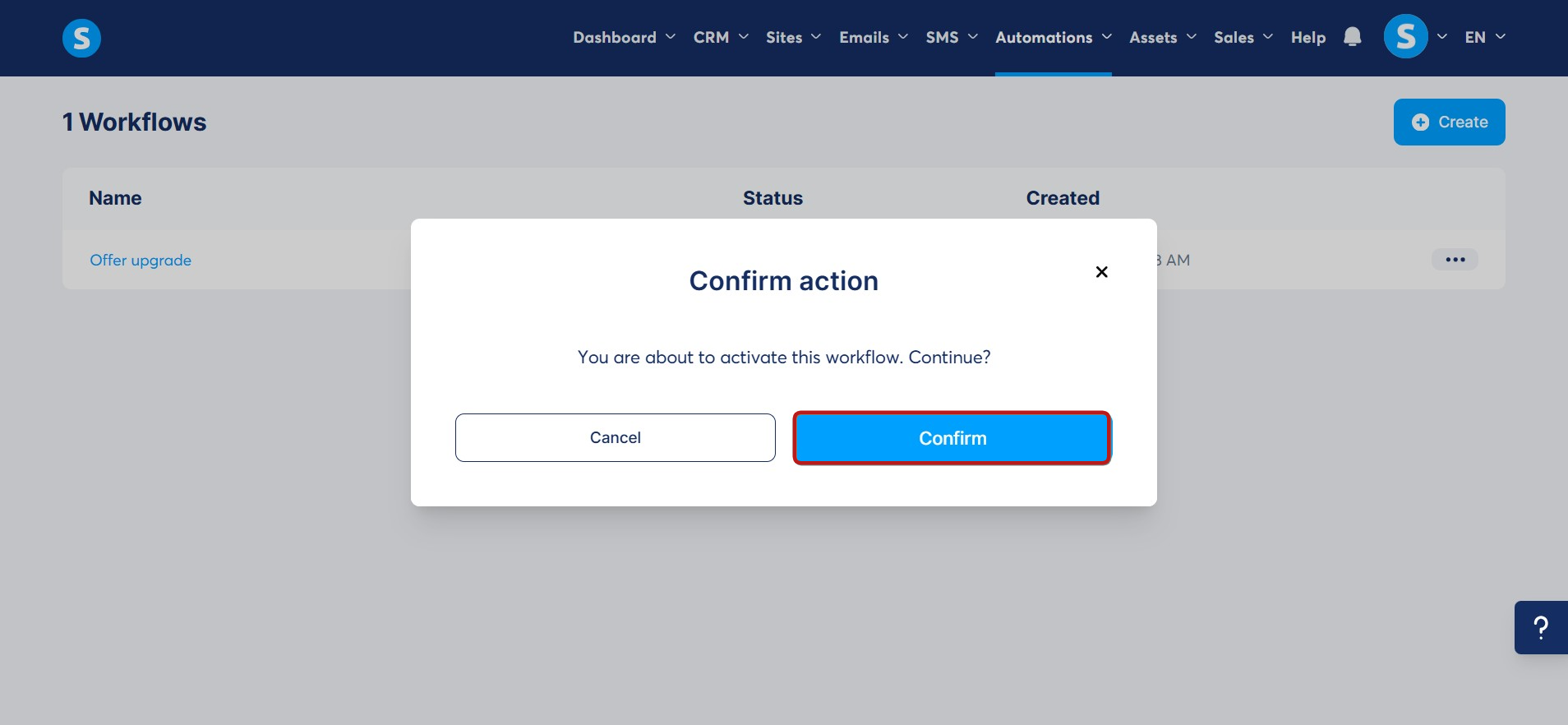
Deactivating the workflow
To deactivate a workflow:
- Go to the workflow list.
- Click Deactivate.

You’ll be given two options :
- Deactivate workflow: Stops new contacts from entering, but existing scheduled tasks will continue.
- Deactivate workflow and cancel related scheduled tasks: Prevents any further scheduled actions from being executed.
Choose the option that fits your needs, then click Confirm to finalize.
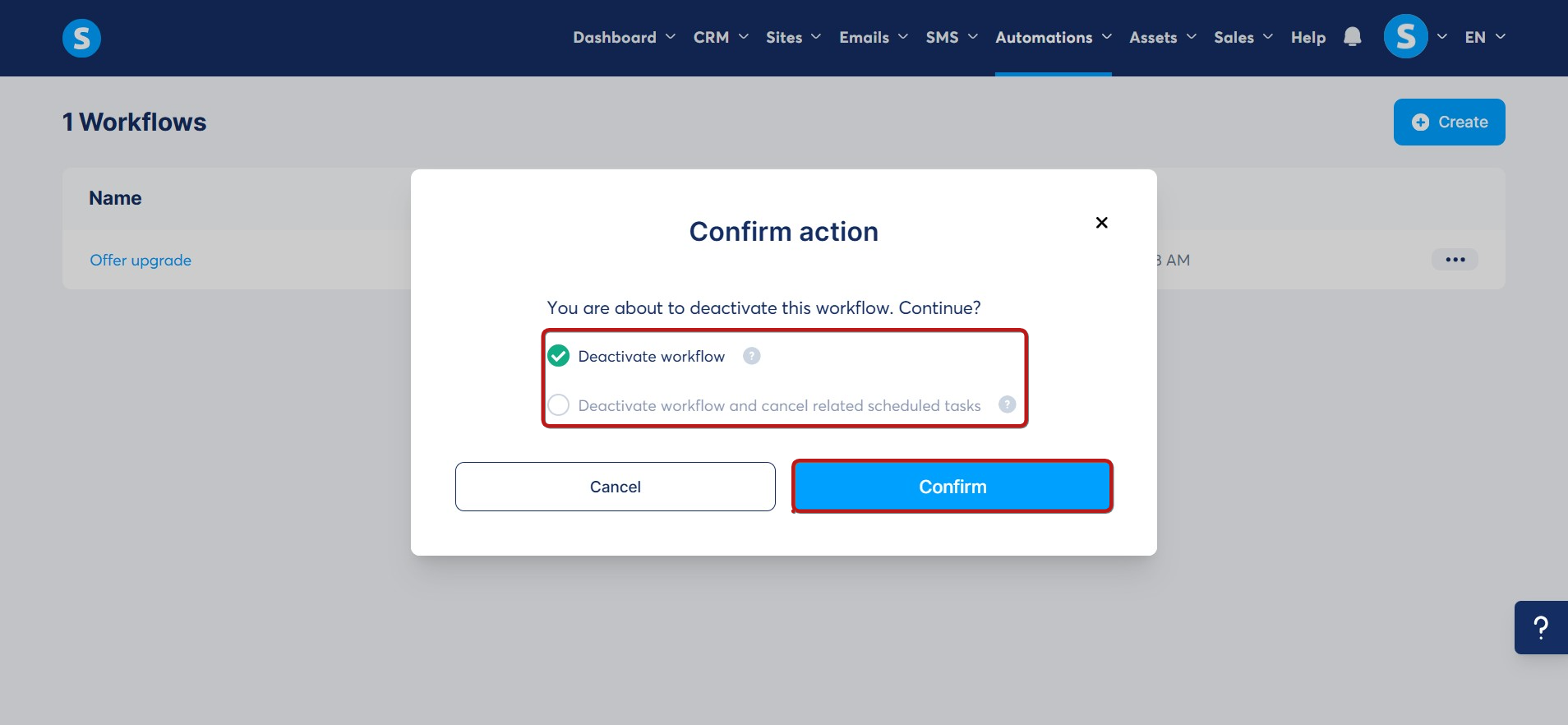
Additional information:
Workflow execution history is stored for only one month. After this period, it is automatically removed from the system for data optimization.
If you can’t find a past workflow task in a contact’s page, it means the task was over one month old and has been removed during system cleanup.
